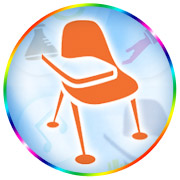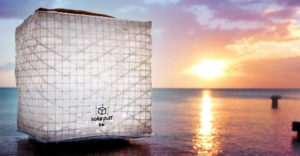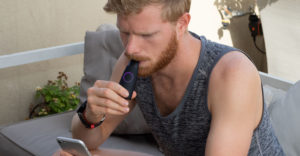
There’s a campaign afoot to put a 3D printer in every school in America. MakerBot — along with education crowdsourcer DonorsChoose.org, America Makes and Autodesk — on Tuesday announced MakerBot Academy.
Individuals and businesses can contribute money to the initiative through DonorsChoose.org. The funds will be used to award MakerBot Academy bundles to teachers who register their schools at the site.
MakerBot Academy bundles consist of a MakerBot Replicator 2 Desktop 3D printer, three spools of filament, and a year of service and support. MakerBot also will support teachers with the development of a 3D printing curriculum.

“As a former teacher, I believe strongly in creating a new model for innovation. A MakerBot is a manufacturing education in a box,” said MakerBot CEO Bre Pettis.
“When you have a MakerBot Desktop 3D Printer, you see the world differently. Instead of waiting for someone to create a product for you, you can create your own,” he observed. “It can change the whole paradigm of how our children will see innovation and manufacturing in America.”
Next Industrial Revolution
MakerBot Academy may offer a means to capture hearts and minds for 3D printing.
“By crowdsourcing the funding, it gets individual citizens to be able to participate in helping to get a 3D printer into classrooms cross the country,” Dan Blum, director of partnerships for DonorsChoose.org, told TechNewsWorld.
The MakerBot initiative fits nicely into efforts by the Obama administration to improve the teaching of science, technology, engineering and mathematics in the public schools, and to make America the leader of a next industrial revolution and bring manufacturing jobs back to the nation, he added.
“We are thrilled that MakerBot and America Makes are joining a growing coalition of citizens working to give American students the ability to design and make almost anything,” said Tom Kalil, deputy director for technology and innovation for the White House Office of Science and Technology Policy.
“As the president has said,” he continued, “we all need to think creatively about giving our young people the tools to be ‘the makers of things, and not just the consumers of things.'”
Bringing 3D printing to public schools is one possible way to build a foundation for skills needed to revive manufacturing in the U.S.
“The hope is it will bring design, prototyping and ingenuity back into the United States,” John Westrum, vice president of 3D printer maker Afinia, told TechNewsWorld.
“Our future workforce has to be prepared for bringing jobs back into America,” he added. “3D printing is a tangible way of bringing engineering into a science classroom.”
More Popular Than Hockey
Topics like tolerances, clearances, ratios, slope and friction can be dry subjects for students, but a 3D printer can make them engaging.
“You can talk about what engineering and design are, but if you bring in exciting hardware like a 3D printer that rocks the perspective of students, then you’ve got their attention,” Jered Dean, teaching associate professor at the Colorado School of Mines, told TechNewsWorld.
With 3D printing, engineering concepts can come to life for students.
“It excites them because they get to create something, they get to make something,” Jesse Roitenberg, education manager at 3D printer maker Stratasys, told TechNewsWorld.
The push for 3D printers in the public schools coincides with the robotics trend, which is currently popular among students, he noted.
Minnesota “recently made robotics a varsity sport, and now there are more varsity robotics teams than men’s varsity hockey teams,” remarked Roitenberg, who lives in the state.
“All of this equipment fits perfectly into robotics,” he added. “They’re using 3D CAD to create custom features, and they can print them out on the 3D printer.”
Technology Pitfalls
Use of 3D printers at the secondary school level can influence a student’s career decisions.
“A lot of people get steered into engineering because they’re good at math,” said Colorado School of Mines’ Dean, who designed a 3D printer curriculum for Pitsco Education.
“There’s truth in that,” he acknowledged, “but there’s a hands-on and building excitement that it seems we forget to tell students until they hit college.”
As valuable as 3D printing can be in the classroom, it still can be subject to the pitfalls of technology.
“You’ve got to have the right technology to put into a classroom,” Dean said. “If you’re going to drop something in a classroom, it has to be as foolproof as you can make it.”





















































